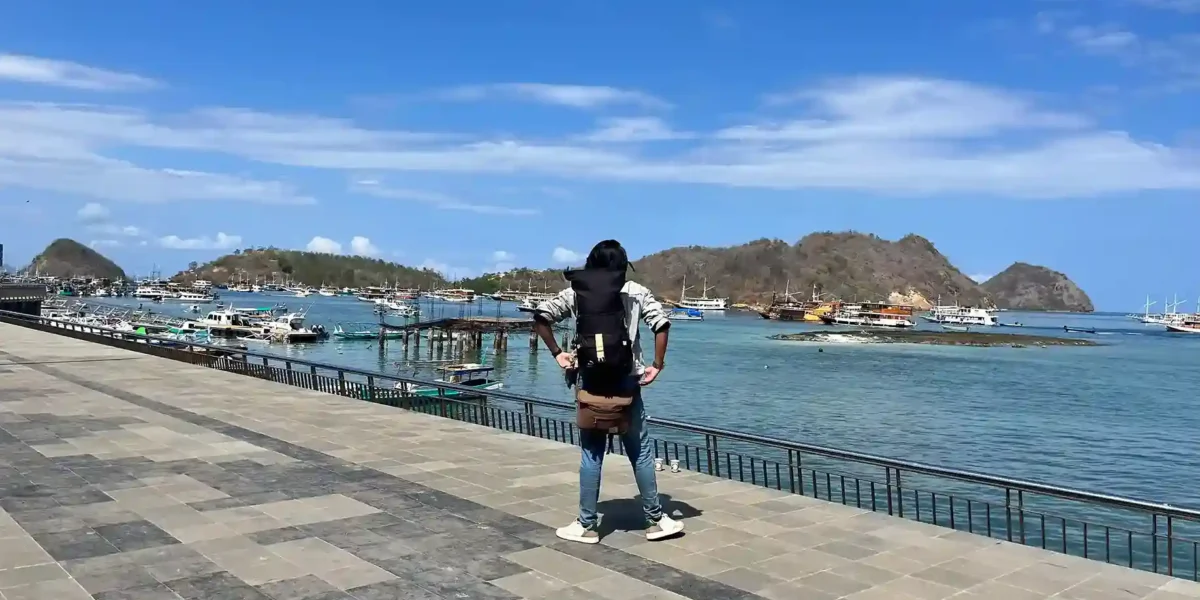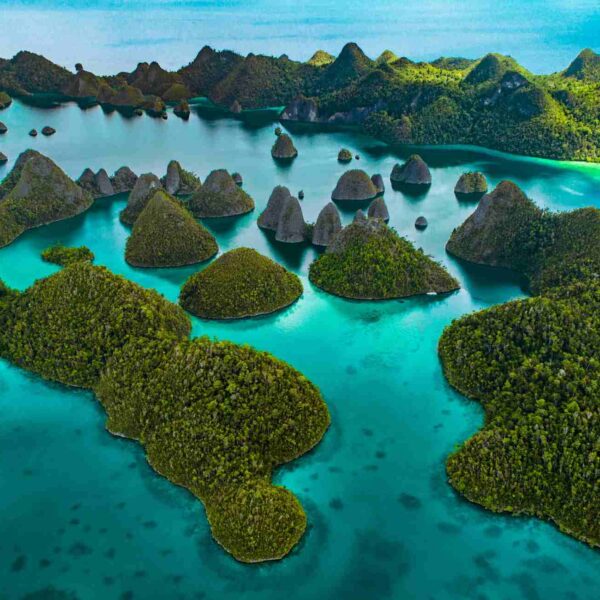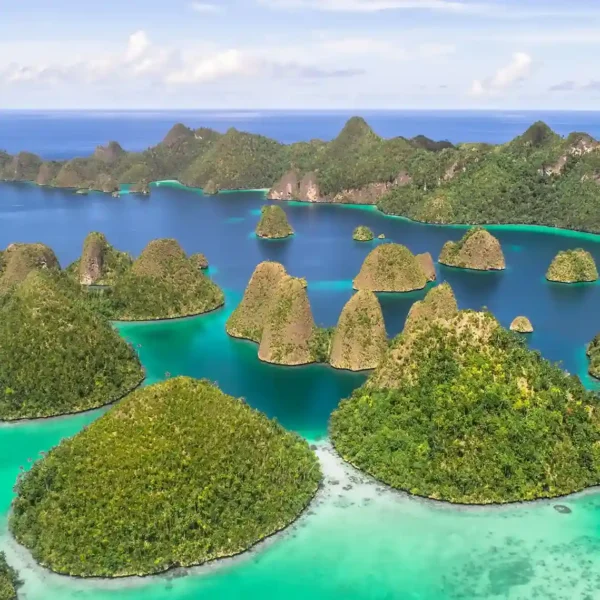Papua is one of those places where nature seems to have held on to its wild beauty. Within the lush rainforests of Raja Ampat lives an amazing wonder: the Red Bird of Paradise (Paradisaea rubra). Its dazzling red plumage and captivating courtship dances make it one of the most beautiful creatures on Earth, often regarded as West Papua’s crown jewel. Papua’s Red Bird of Paradise isn’t just a symbol of its natural beauty; it’s also a major draw for birdwatchers everywhere. How does this bird survive in such a remote location? What secrets lie behind its extraordinary beauty? Let’s dive into the mystery of the Red Bird of Paradise and uncover the wonders of Raja Ampat.
Red Bird of Paradise: A Unique Charm
The Red Bird of Paradise is one of 38 bird species in the Bird of Paradise family. So, what makes this one stand out? The Red Bird of Paradise is fairly large, growing up to 33 cm in length. Its striking colors—a mix of brown, yellow, and red—make it easily recognizable. Male birds, in particular, are a sight to behold with their emerald-green faces, black corkscrew-like tail wires, and shiny red plumes that extend from their chests. These beautiful feathers don’t grow overnight; it takes at least six years for a male bird to achieve its full, glorious appearance.
The captivating red decorative feathers are one of the main reasons this bird was once a target for hunters. However, the Red Bird of Paradise was fortunate as the trade in its feathers was halted in the early 20th century. Today, local tribes still use these feathers in traditional attire, but they collect them in small quantities to protect the bird’s population.
Red Birds of Paradise Habitat: Raja Ampat’s Lowland Rainforest
The Red Bird of Paradise is an endemic species, meaning it can only be found in specific areas of Indonesia. In this case, those areas are the islands of Raja Ampat—Waigeo, Gam, and Batanta. The lowland rainforests of these islands are home to this extraordinary bird. Here, the Red Bird of Paradise lives alongside other Bird of Paradise species, such as the Wilson’s Bird of Paradise, which is also endemic to the region.
For birdwatching enthusiasts, Raja Ampat is nothing short of paradise. Beyond the thrill of spotting the Red Bird of Paradise, you’ll experience breathtaking natural scenery, including dense, leafy trees, the soothing sounds of clear rivers, and fresh, crisp air. The thick rainforests of Waigeo and Batanta are prime locations to see these birds in action, especially early in the morning when they sing and display their beautiful plumage.
A Red Bird of Paradise’s Ecological Role: Forest Guardian

In the Papua rainforest ecosystem, the Red Bird of Paradise plays a vital role. The bird feeds on insects and fruits, thereby aiding in the dispersal of fruit seeds throughout the forest. In fact, several fruit trees on the islands of Waigeo and Batanta rely solely on the seed dispersal services of the Red Bird of Paradise for their survival. Without their help, the balance of this rainforest ecosystem could be disrupted.
Moreover, the abundance of the Red Bird of Paradise serves as an indicator of a healthy environment. The large number of these animals suggests that the forest is well-preserved and has enough natural resources to support the diverse species living there.
Red Bird of Paradise Threats and Conservation
Although the trade in Red Bird of Paradise feathers has stopped, the species still faces other threats that endanger its survival. One of the biggest challenges is the loss of habitat due to deforestation and forest encroachment for agriculture and settlement. Additionally, illegal hunting remains an issue in some areas.
Conservation efforts are underway to protect the Red Bird of Paradise and other bird species in Papua. Several conservation organizations are working with local governments and indigenous communities to preserve the forests that these birds call home. One effective way to support these conservation efforts is by visiting Raja Ampat through sustainable ecotourism programs, such as liveaboard trips that allow travelers to see the Red Bird of Paradise in its natural habitat without harming the environment.
Discovering the Red Bird of Paradise with Raja Ampat Liveboard
IIf you want to see the Red Bird of Paradise up close, Komodo Luxury’s Raja Ampat Liveaboard is the place to go. Liveaboards, specially designed boats, offer tourists a comfortable and luxurious way to explore Raja Ampat. You can stay on the boat for several days, soaking in the stunning ocean views and enjoying activities like snorkeling, diving, and, of course, birdwatching.
One of the most popular routes is a journey to Waigeo and Batanta Islands, where you can witness the Red Bird of Paradise in its natural setting. Guided by experienced local guides, you’ll walk into the forest early in the morning when the birds are most active. Feel the excitement of hearing their melodious calls and seeing their spectacular plumage. Plus, you’ll also get to enjoy the other natural beauties of Raja Ampat, such as white sandy beaches, vibrant coral reefs, and crystal-clear waters.
The Red Bird of Paradise, a Must-See Treasure of Raja Ampat, Papua

The Red Bird of Paradise is not only a symbol of Papua’s natural beauty but also a testament to the incredible biodiversity found in Indonesia. For bird lovers and adventurers alike, seeing this bird in its natural habitat is an unforgettable experience. By joining a Raja Ampat Liveaboard by Komodo Luxury, you not only get the chance to see the Red Bird of Paradise. But also contribute to the conservation and protection of Papua’s natural wonders.
If you’re searching for a unique and adventurous travel experience, Raja Ampat is the place to be. Join a liveaboard trip and witness the natural wonders that can only be found in Papua!

































